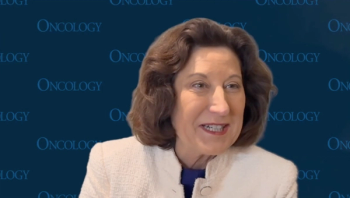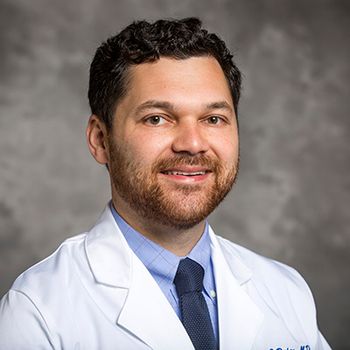
Breast Cancer Risk Assessment Helps Determine Necessary Follow-Up
In this interview we discuss breast cancer prevention and risk assessments, including the questions these assessments aim to answer, what classifies someone as average or high risk, and appropriate next steps for patients who fall in these categories.
As part of our coverage of the San Antonio Breast Cancer Symposium held December 6–10 in San Antonio, Texas, we are speaking with Julie Nangia, MD, an assistant professor of medicine at the Lester and Sue Smith Breast Center at Baylor College of Medicine. At this year’s meeting, Dr. Nangia will be participating in a session on breast cancer prevention.
-Interviewed by Leah Lawrence
Cancer Network: Thank you for speaking with us today. At this year’s meeting, you are participating in a session discussing breast cancer prevention and, specifically, breast cancer risk assessments. What are some of the most common risk assessments used and what are they designed to do?
Dr. Nangia: The focus of my educational talk is on non-genetic risk assessment. If you look at different patient populations, there are three risk groups that women fall into. There is the average-risk woman who has no family history and no personal risk factors like breast biopsies that put them at a higher risk. That woman represents about 75% of the population. Of the remaining 25%, half are in a moderate-risk group, which is the group we are trying to target with these risk models, and the other half is in the hereditary breast cancer risk group.
Women that would be at a moderate risk for breast cancer would be women with a family history of breast cancer but not those associated with known genes, or they have had a breast biopsy that shows a precancerous change. It is important to know whether a woman is average, moderate, or high risk because breast cancer is so common. Even the average-risk woman has a 12% risk of cancer. We need to target each group and give them specific recommendations.
The two most commonly used models are the Gail model and the IBIS, or Tyrer-Cuzick, model, and I would recommend running those in any individual who has a family history of breast cancer or who has had a breast biopsy.
Cancer Network: Have these risk assessments been well validated in the literature?
Dr. Nangia: I probably don’t know all the nuances of the research, but both the Gail model and the Tyrer-Cuzick model are well-validated and established models that are part of breast cancer risk assessment.
Cancer Network: Which women should be completing these risk assessments?
Dr. Nangia: Especially now, with the changing mammography guidelines, that is something I get asked a lot because a lot of the guidelines say to individualize screening based on risk. Most women fall into that average-risk group. If a woman has a family history of breast cancer, or even other cancers that might be linked to other hereditary cancer syndromes, or if they have a previous breast biopsy showing a precancerous change, these are women that should get a risk assessment. Of those women who get a risk assessment, a small portion may still be average risk, but a good portion may end up being higher risk and we may recommend some different management for them.
Cancer Network: What sort of questions are the risk assessments looking at?
Dr. Nangia: The Gail model basically asks a series of questions-“Do you have a history of cancer? Do you have a gene in your family? How many relatives do you have that are first degree with breast cancer?” That takes into account only mothers and sisters. It asks if you have ever had a breast biopsy that was precancerous, and it asks personal factors like when you started your period and how old you were when you had your first child. The Tyrer-Cuzick model takes all of that into account, plus it adds on three generations of family history.
The Gail model is much easier for a physician to run in a clinic, but it has limitations because it doesn’t take into account any paternal history and it doesn’t take into account second-degree relatives. The IBIS or Tyrer-Cuzick model takes that into account, but you have to input a lot more data to get a result, so it takes a little bit longer to run during a visit.
Cancer Network: How is “high risk” defined using these risk assessments?
Dr. Nangia: There are two different cutoff points we use. For management, if a lifetime risk of breast cancer is more than 20%, sometimes we offer to add a screening breast MRI in addition to annual mammogram because in higher-risk populations a combination of mammogram and MRI has been shown to detect more cancer at earlier stages. The other number we look at is the 5-year risk number, which is something that the Gail model gives us, because if that number is more than 1.67%, then that woman is at higher risk for breast cancer and we may offer medications for prevention, like tamoxifen or raloxifene.
Cancer Network: If a woman is classified as average risk or high risk, what are some of the common next steps? How are they followed?
Dr. Nangia: I think average-risk women can follow general population screening guidelines, which currently recommend mammograms at least every 1 to 2 years starting between age 40 or 50 depending on which guidelines you look at, as well as an annual clinical breast exam and breast self-awareness.
For all-risk populations, we discuss lifestyle changes. There are things that have been shown to decrease risk of breast cancer. Twenty percent to 30% of breast cancer is estimated to be preventable by lifestyle changes. I recommend that women exercise three to five hours a week, maintain normal body mass index or weight, and have less than three alcoholic drinks per week. If a woman falls into the higher-risk group, we would do all the same things as an average-risk woman, but we may say that she should have mammograms starting 10 years earlier than her mother did. If that person’s mother was diagnosed at 45, we would recommend for the daughter to start imaging at 35 because that daughter would be at a higher risk. We may also recommend screening MRIs or medication like tamoxifen.
Cancer Network: I want to thank you again for taking the time to speak with us about breast cancer prevention and risk assessments.
Dr. Nangia: Yes, absolutely. Thank you.
Newsletter
Stay up to date on recent advances in the multidisciplinary approach to cancer.















































































